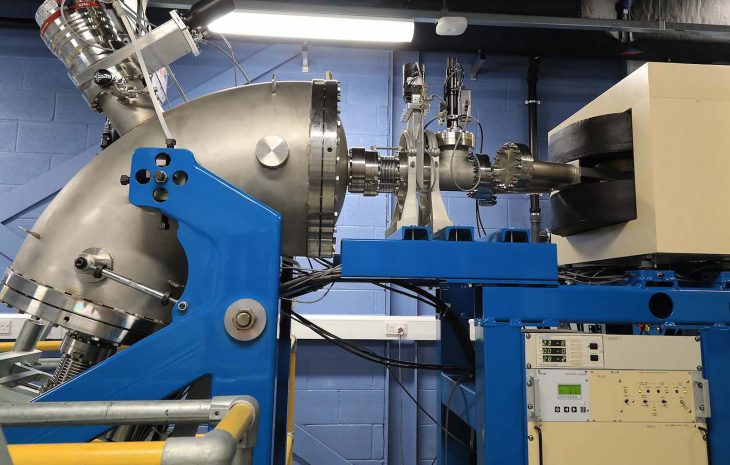Spacecraft launched from Earth need to be light, but still have the right amount of fuel to see them achieve orbit. If too heavy, the amount of fuel required would be prohibitive, but once outside of the Earth’s protective magnetic field, a vehicle may then be exposed to potentially destructive amounts of solar radiation, which becomes more important for any mission of long duration mission — such as a journey to Mars.
Dr. Matheus Tunes, an expert in the observation of radiation damage in materials at the Montanuniversitaet Leoben (MUL) in Austria, has carried out new research on aluminum alloys at the Microscopes and Ion Accelerators for Materials Investigations (MIAMI-2) facility at the University of Huddersfield with the aim of addressing this challenge.
Aluminum in Space
Aluminum alloys have been and continue to be used in spacecraft due to their excellent strength to weight ratio. However, the radiation encountered in space can dissolve the hardening precipitates with potentially disastrous and fatal consequences for astronauts.
“Aluminium is ideal because of its light weight, but today’s alloys show undesirable softening when exposed to high-energy radiation due to the dissolution of the hardening phases,” said Prof. Stefan Pogatscher, chair of Nonferrous Metallurgy at the MUL. “We have addressed this problem now.”
The researchers recently discovered a hardening phase within newly developed alloys that does not dissolve when bombarded with particle radiation. This T-phase has a very complicated structure consisting of Mg32(Zn,Al)49 and is surprisingly able to survive the most extreme irradiation conditions, which the researchers simulated in an electron microscope using an ion accelerator.
Based on these observations, the researchers present new ways of designing alloys for space applications in a groundbreaking article, which was published in the prestigious journal Advanced Science.
“The paper [focused on] testing these new alloys using the MIAMI facilities, because we can subject the alloy to energetic particle radiation and, at the same time, monitor the effect of this radiation on the alloy microstructure with a transmission electron microscope,” said Tunes. “It sheds light on a very exciting new field of research we call ‘prototypic space materials for stellar-radiation environments.’ A nuclear reactor is also an extreme environment, as is the sun with solar cycles, but dynamic instabilities on the sun such as solar flares and coronal mass ejections are more extreme than anything on Earth. The sun is a very efficient nuclear fusion reactor and high-energy particle accelerator.”
With manned missions to the Moon and Mars currently being planned, the advantages of spacecraft that are light enough to launch and able to withstand radiation to protect their crews are clear. Next on the agenda for Tunes and his colleagues at MIAMI-2 and MUL is to find out why the alloy behaves the way it does and what further benefits there could be.
“We have an active collaboration and 2021 will be a busy year for the joint Huddersfield-Leoben space materials research project,” noted Tunes. “We discovered the T-phase is radiation-tolerant, but we haven’t discovered why that is. We have an idea which involves the chemical complexity of the phase that we believe could lead to some very interesting research. We hope that we can make an important contribution to further human exploration of space.”

